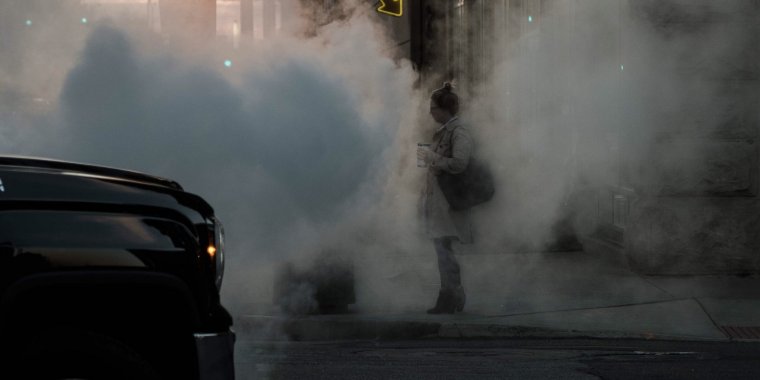| News / Science News |
Pregnancy hypertension risk increased by traffic-related air pollution
A new report from the National Toxicology Program (NTP) suggests that traffic-related air pollution increases a pregnant woman’s risk for dangerous increases in blood pressure, known as hypertension.

Traffic-related air pollution. Photo: David Lee/Unsplash
NTP scientists evaluated published research on the link between traffic-related air pollution, or TRAP, and hypertensive disorders broken down by pollutant measurements of TRAP, such as particulate matter (PM2.5).
PM is the term for a mixture of solid particles and liquid droplets found in the air, and PM2.5 refers to fine inhalable particles, with diameters that are generally 2.5 micrometers or smaller.
The average human hair is about 70 micrometers in diameter, about 30 times larger than the largest fine particle.
“What we found when we reviewed the literature is that exposure to PM2.5 from traffic emissions was associated with development of hypertensive disorders in pregnant women,” said Brandy Beverly, Ph.D., lead scientist and researcher at the National Institute of Environmental Health Sciences, part of the National Institutes of Health. “When these women are exposed to PM2.5 during their entire pregnancy, the likelihood of developing preeclampsia increases by about 50%.”
Other components of TRAP that NTP evaluated included nitrogen oxides, carbon monoxide, black carbon, and elemental carbon, along with parameters like traffic density and mothers’ proximity to main roads.
TRAP comes from the combustion of fossil fuels by motor vehicles. These vehicle emissions are mixtures of gases and particles that are easily inhaled and have adverse health effects. TRAP is known to be a major risk factor for cardiovascular disease, including hypertension.
Hypertensive disorders of pregnancy complicate more than 10% of pregnancies worldwide and are a leading cause of maternal and fetal illness and death.
Mothers with hypertension during pregnancy are more likely to have a pre-term delivery. Their infants are at greater risk for low birthweight and a range of long-term health problems associated with pre-mature birth.
Pregnant women may experience four types of hypertensive disorders:
Gestational hypertension, or high blood pressure, in the second half of pregnancy.
Preeclampsia, or high blood pressure with protein in urine or impaired liver or kidney function, in the second half of pregnancy. If preeclampsia worsens and causes seizures, it becomes eclampsia – a serious condition for mother and child with the potential to be fatal.
Chronic hypertension, or high blood pressure before pregnancy or early in pregnancy, that continues throughout pregnancy.
Chronic hypertension with preeclampsia, or high blood pressure before pregnancy or early in pregnancy, that continues throughout pregnancy and is complicated by new onset protein in the urine or impaired liver or kidney function.
Using their standard four-tier scale to classify human hazards, NTP looked at the combined evidence from the individual components and concluded that TRAP is a presumed human hazard for hypertensive disorders during pregnancy, though they weren’t able to distinguish between the four types of disorders.
The scale ranges from the highest hazard rating of “known”, followed by “presumed”, then “suspected”, and finally, “not classifiable”. (National Institutes of Health)
YOU MAY ALSO LIKE





